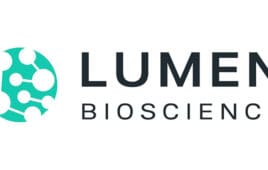
3D illustration of T cells attacking cancer cells. Concept photo.
Belgian research groups from the UCLouvain and WELBIO, VIB and Ghent University, and the biotechnology company argenx elucidated the three-dimensional structure of an assembly of proteins operating on cells that dampen immune responses. They also discovered how an antibody can block this assembly and the immunosuppression it induces downstream. Such an antibody could serve to stimulate immunity against tumor cells in cancer patients, triggering the destruction of their tumors by immune cells. The study is published in the authoritative journal Science.
Tregs (regulatory T lymphocytes) are immunosuppressive cells that normally counterbalance excessive immune reactions to prevent autoimmune diseases. But in cancer patients, they play deleterious roles by tempering immune reactions against tumor cells. Tregs induce their effects by producing a protein messenger called TGF-beta. This messenger transmits inhibitory signals to immune cells in the immediate vicinity, notably those that are supposed to destroy tumors in cancer patients.
The way Tregs produce TGF-beta is complex and finely regulated, because TGF-beta is very potent and must be kept under tight control. Three years ago, Prof. Sophie Lucas and her team at the de Duve Institute of the UCLouvain discovered that TGF-beta is released by Tregs from a protein called GARP, present on the Treg surface. In collaboration with argenx, her team also discovered that it was possible to block the release of TGF-beta from GARP with specific antibodies, which were rare and difficult to obtain. The next thing to find out was how GARP regulates the production of the TGF-beta messenger and how antibodies actually block its release.
To address these questions, Sophie Lucas and argenx initiated a collaboration with the team of Prof. Savvas Savvides at the VIB-UGent Center for Inflammation Research, to resolve the three-dimensional structure of the protein assembly made of GARP and TGF-beta. The researchers used X-ray crystallography, a method that has been used to study the structure of molecules for more than a century and that is still being developed for the study of biological macromolecules at atomic resolution. However, they were confronted with the practical problem that they could not readily obtain crystals of the GARP and TGF-beta complex. Via a highly collaborative effort spearheaded by Dr. Stéphanie Lienart (UCLouvain) and Dr. Romain Merceron (VIB – Ghent University), the two teams decided to use a blocking antibody to stabilize the structure – a successful approach that not only helped to generate suitable crystals for structure determination, but also provided details about how a therapeutic antibody might function.
Prof. Savvas Savvides (VIB-UGent): “We discovered that GARP resembles a horseshoe that is straddled by TGF-beta. The two molecules are so intricately assembled that TGF-beta itself contributes to the structure of the GARP horseshoe. The antibody fragment sticks to both GARP and TGF-beta in the assembly. It appears to glue the two molecules to one another, ensuring that when other molecules pull on one part of the assembly, the small, active part of TGF-beta is not released, and is thus prevented from conveying its inhibitory message.”
Prof. Sophie Lucas (de Duve Institute at the UCLouvain): “Visualization of this large molecular assembly illustrates the feasibility of blocking TGF-beta activity emanating from a precisely defined and restricted cellular source, such as the surface of Tregs. This can lead to the design of exquisitely specific approaches to treat various diseases associated with altered TGF-beta or Treg activity, most notably for the immunotherapy of cancer.”
Filed Under: Infectious Disease




